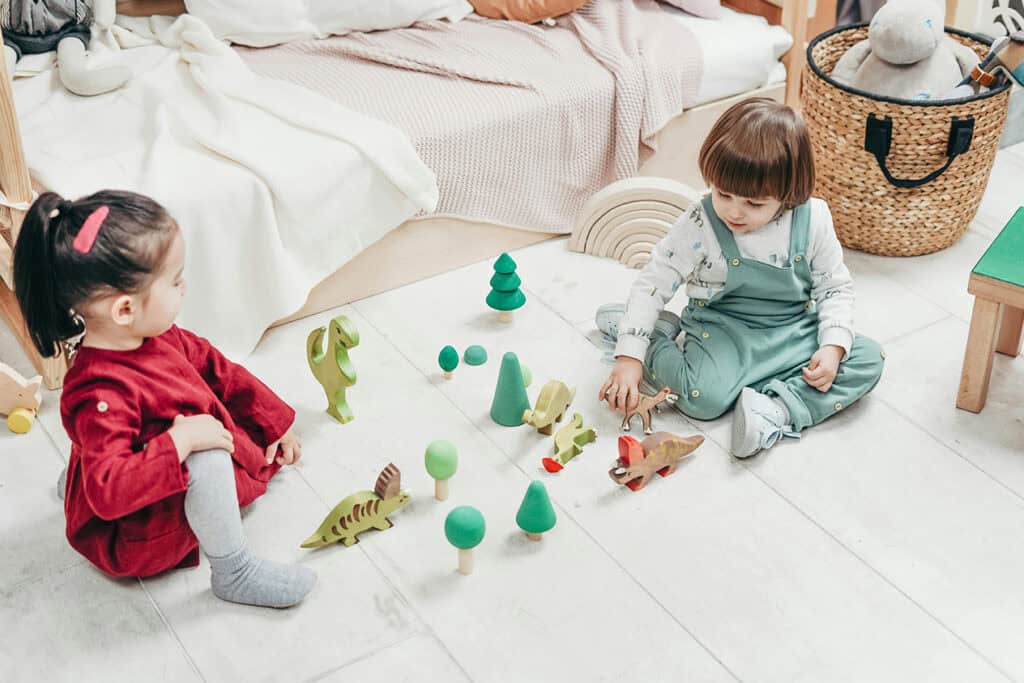
Looking for a Simple and Effective Daily Schedule for Your Toddler? Managing a toddler’s day can be a challenge, but a structured daily schedule is key to providing both balance and stability. A consistent routine promotes better sleep, behavior, and development.
Whether you’re a stay-at-home parent or juggling multiple responsibilities, having a well-planned day will reduce stress and improve your toddler’s sense of security.
This article highlights 7 essential information to create a toddler-friendly schedule and offers a sample daily routine that works for most toddlers.
Let’s explore the perfect toddler daily schedule!
1. What Is a Toddler’s Daily Schedule?

A toddler’s daily schedule is important for both the child and the parents. It helps provide structure and balance to their day. A typical schedule includes meals, naps, and playtime. For a stay-at-home mom, following a toddler schedule can help manage responsibilities.
Mornings often start with a morning nap, followed by breakfast and independent play. Toddlers need physical activity, so outdoor play is important. Mealtime comes with breakfast, lunch, and an afternoon snack.
As the day progresses, it’s time for family weekend activities or quiet time to unwind before they fall asleep. Having a to-do list and life planning helps organize the busy toddler’s day and ensures enough time for rest and activities.
2. What Are Routines?

Routines are set patterns of activities that happen daily. They give structure and predictability to a child’s day.
Common Toddler Routines:
✔ Morning Routine – Waking up, brushing teeth, dressing, and eating breakfast.
✔ Daily Routine – Playing, learning, and eating meals at set times.
✔ Bedtime Routine – Bathing, putting on pajamas, reading, and sleeping.
Routines help toddlers understand what to expect. This reduces anxiety and improves their behavior.
See also Benefits of Self-Discipline: 16 Ways It Improves Your Life
3. Why a Daily Schedule is Important for Toddlers

Toddlers thrive on routine. A predictable schedule helps them feel secure and understand their day.
Benefits of a Daily Routine:
✔ Builds security – Helps toddlers feel safe and confident.
✔ Encourages better sleep – Promotes a steady sleep cycle.
✔ Supports learning – Enhances memory and focus.
✔ Teaches responsibility – Encourages independence.
✔ Reduces stress – Lessens frustration from unpredictability.
Now, let’s explore the ideal daily schedule for toddlers.
See also Fun Activities for Boys: 25 Exciting Ideas for Play and Learning
4. Example Toddler Daily Schedule

- 8:00 AM – 10:00 AM: Wake up, cuddle, and greet the day.
- Change diaper or use the potty.
- Wash hands and face.
- Have a healthy breakfast (fruits, eggs, toast, or oatmeal).
- Get dressed for the day.
- 10:00 AM – 12:00 PM: Free play with toys or blocks.
- Storytime with picture books.
- Outdoor play (walk, playground, or running).
- Simple learning activities (shapes, colors, or numbers).
- 12:00 PM – 12:30 PM: Offer a small snack like yogurt, fruit, or crackers.
- Give water or milk to stay hydrated.
- Keep snacks light to avoid overeating before lunch.
- 12:30 PM – 1:30 PM: Listen to soft music or lullabies.
- Cuddle and relax in a calm environment.
- Offer a quiet activity like coloring or puzzles.
- 1:30 PM – 2:30 PM: Serve a balanced meal with protein, veggies, and grains.
- Encourage self-feeding with small, easy-to-hold foods.
- Clean up together to teach responsibility.
- 2:30 PM – 4:30 PM: Create a calm atmosphere with dim lights.
- Read a short story before nap.
- Allow 1-2 hours of rest.
- 4:30 PM – 5:00 PM: Gently wake up if still asleep.
- Offer a light snack like a banana or cheese.
- Drink water to stay hydrated.
- 5:00 PM – 6:30 PM: Play outside (bike, sandbox, or nature walk).
- Do a craft activity (painting or stickers).
- Engage in role-play (pretend cooking, dolls, or cars).
- 6:30 PM – 7:30 PM: Eat together as a family.
- Serve a balanced meal with protein, veggies, and healthy carbs.
- Encourage good table manners.
- 7:30 PM – 8:00 PM: Take a warm bath to relax.
- Brush teeth and wash hands.
- Put on comfortable pajamas.
- 8:00 PM – 8:30 PM: Read a short bedtime story.
- Sing a lullaby or play soft music.
- Cuddle and say goodnight.
- Turn off lights for sleep.
5. How to Adjust a Toddler’s Schedule

Every toddler is different. Some need more sleep, while others need more playtime.
✔ Watch their cues – Notice when they get tired or hungry.
✔ Be flexible – Adjust nap times or meals based on needs.
✔ Keep consistency – Small changes are fine, but a routine should stay predictable.
6. Tips for Creating a Toddler Routine

✔ Stay Consistent: A routine works best when followed daily.
✔ Be Flexible: Allow slight changes based on your toddler’s needs.
✔ Encourage Independence: Let them help with small tasks like dressing.
✔ Use Visual Cues: A picture chart can help toddlers understand their routine.
✔ Make it Fun: Sing songs, use stickers, and celebrate small achievements.
7. Common Challenges and How to Handle Them

My Toddler Resists the Schedule
✔ Give them small choices (e.g., “Do you want to read this book or that book?”).
✔ Stay calm and consistent. Toddlers adjust over time.
My Toddler Won’t Nap
✔ Create a quiet, dark space for rest.
✔ Even if they don’t sleep, quiet time still helps.
My Toddler is Too Energetic at Night
✔ Reduce screen time before bed.
✔ Try a calm bedtime routine with books and soft music.
See also Roles and Responsibilities of Family Members: 60 Actions for Having Love and Cooperation
Daily Schedule for Toddlers: A Recap
A daily schedule for toddlers is key to ensuring balance in their day. It helps the toddler and managing stay-at-home mom responsibilities. Starting the day with a morning routine, including breakfast and independent play, is essential.
Physical activity is important to keep a busy toddler engaged and healthy. After playtime, an afternoon snack gives them the energy needed for the rest of the day. Toddlers also need rest, and a set nap time helps them fall asleep easily.
Using life planning tools can help parents stay organized. A structured day benefits both the child’s development and the parent’s ability to manage daily tasks. A well-organized schedule can support healthy habits and disease control.


